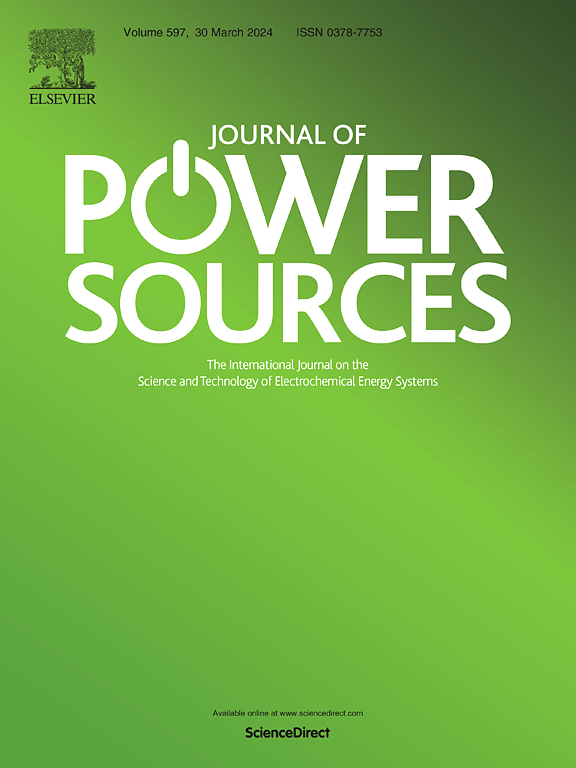Yolk-shell structured ultra-small Fe3C nanoparticles encapsulated in S, N-codoped porous carbon as effective catalysts for the oxygen reduction reaction in microbial fuel cells
IF 8.1
2区 工程技术
Q1 CHEMISTRY, PHYSICAL
引用次数: 0
Abstract
Oxygen reduction reaction (ORR) at the cathode of Microbial Fuel Cells (MFCs) is the limiting step due to its slow kinetics, making the development of efficient, stable, and cost-effective catalysts essential. This study focuses on a yolk-shell structured ultra-small Fe3C nanoparticles encapsulated in a sulfur, nitrogen-codoped porous carbon matrix. The strong complexation of citric acid (CA) with iron ions results in a smaller particle size of Fe3C nanoparticles, and its pore forming ability favors the effective assemble of a unique hollow yolk-shell structure. Due to the highly dispersed and ultra-small (4.99 ± 0.23 nm) Fe3C nanoparticles and the presence of abundant Fe-N active sites, Fe-SNC-2CA demonstrates superior ORR activity compared to commercial Pt/C, with half-wave potentials of 0.88 V and 0.68 V in alkaline and neutral solutions, respectively. Its unique yolk-shell structure ensures excellent stability by preventing the aggregation and dissolution of internal Fe3C nanoparticles. The Fe-SNC-2CA equipped MFC achieves a power density of 1614 ± 60 mW m−2, maintaining output stability with a 5.3 % decay over 430 h, and finally contributes a 75.6 % chemical oxygen demand removal. This study highlights a straightforward yolk shell synthesis method and the beneficial role of ultra-small Fe3C in fuel cell application.
求助全文
约1分钟内获得全文
求助全文
来源期刊

Journal of Power Sources
工程技术-电化学
CiteScore
16.40
自引率
6.50%
发文量
1249
审稿时长
36 days
期刊介绍:
The Journal of Power Sources is a publication catering to researchers and technologists interested in various aspects of the science, technology, and applications of electrochemical power sources. It covers original research and reviews on primary and secondary batteries, fuel cells, supercapacitors, and photo-electrochemical cells.
Topics considered include the research, development and applications of nanomaterials and novel componentry for these devices. Examples of applications of these electrochemical power sources include:
• Portable electronics
• Electric and Hybrid Electric Vehicles
• Uninterruptible Power Supply (UPS) systems
• Storage of renewable energy
• Satellites and deep space probes
• Boats and ships, drones and aircrafts
• Wearable energy storage systems
 求助内容:
求助内容: 应助结果提醒方式:
应助结果提醒方式:


